Climate & Environment
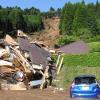 Seeing the severe damage and massive loss of life from earthquakes led Jenny Ramírez into the field of geotechnical earthquake engineering. Ramirez, who was born in Guayaquil, Ecuador, is a doctoral student in civil engineering at CU-Boulder. She now is doing numerical simulations of soil deposits subjected to earthquakes.
Seeing the severe damage and massive loss of life from earthquakes led Jenny Ramírez into the field of geotechnical earthquake engineering. Ramirez, who was born in Guayaquil, Ecuador, is a doctoral student in civil engineering at CU-Boulder. She now is doing numerical simulations of soil deposits subjected to earthquakes.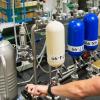 <p>Global emissions of ethane, an air pollutant and greenhouse gas, are on the uptick again. A team led by CU-Boulder found that a steady decline of global ethane emissions following a peak in about 1970 ended between 2005 and 2010 in most of the Northern Hemisphere and has since reversed. Between 2009 and 2014, ethane emissions in the Northern Hemisphere increased by about 400,000 tons annually, the bulk of it from North American oil and gas activity.</p>
<p>Global emissions of ethane, an air pollutant and greenhouse gas, are on the uptick again. A team led by CU-Boulder found that a steady decline of global ethane emissions following a peak in about 1970 ended between 2005 and 2010 in most of the Northern Hemisphere and has since reversed. Between 2009 and 2014, ethane emissions in the Northern Hemisphere increased by about 400,000 tons annually, the bulk of it from North American oil and gas activity.</p>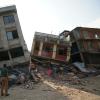 <p>New findings examine the aftermath of the Gorkha earthquake, which struck Nepal on April 25, 2015.</p>
<p>New findings examine the aftermath of the Gorkha earthquake, which struck Nepal on April 25, 2015.</p>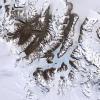 <p>The perpetually ice-covered lakes in Antarctica’s McMurdo Dry Valleys preserve the dissolved remnants of black carbon from thousand-year-old wildfires as well as modern day fossil fuel use, according to a new study led by the University of Colorado Boulder. </p>
<p>The perpetually ice-covered lakes in Antarctica’s McMurdo Dry Valleys preserve the dissolved remnants of black carbon from thousand-year-old wildfires as well as modern day fossil fuel use, according to a new study led by the University of Colorado Boulder. </p>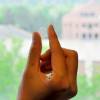 <p>A CU-Boulder research team thinks the same type of liquid crystals you see in the display panel of your smart phone may be the key component in a new window coating that could lower energy costs in buildings across the nation.</p>
<p>A CU-Boulder research team thinks the same type of liquid crystals you see in the display panel of your smart phone may be the key component in a new window coating that could lower energy costs in buildings across the nation.</p>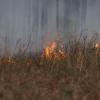 Humans use fire for heating, cooking, managing lands and, more recently, fueling industrial processes. Now, research from the University of Colorado has found that these various means of using fire are inversely related to one another, providing new insight into how people are changing the face of fire.
Humans use fire for heating, cooking, managing lands and, more recently, fueling industrial processes. Now, research from the University of Colorado has found that these various means of using fire are inversely related to one another, providing new insight into how people are changing the face of fire.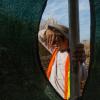 Global warming will likely exacerbate epidemics of chronic kidney disease seen recently in hot, rural regions of the world, according to a new assessment by an international team of researchers, including two from the University of Colorado Boulder.
Global warming will likely exacerbate epidemics of chronic kidney disease seen recently in hot, rural regions of the world, according to a new assessment by an international team of researchers, including two from the University of Colorado Boulder.- Organized by CU-Boulder’s Community Engagement Design and Research Center (CEDaR), CU-Boulder and the city of Boulder together have joined the <a href="http://metrolab.heinz.cmu.edu/"><span class="s2">MetroLab Network</span></a>, a nationwide collection of 35 city-university partnerships focused on bringing data, analytics and innovation to local government.
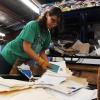 CU-Boulder's Zero Waste Team is using creative solutions to decrease campus waste going to landfills, while increasing recycling and composting and reducing paper use.
CU-Boulder's Zero Waste Team is using creative solutions to decrease campus waste going to landfills, while increasing recycling and composting and reducing paper use. Here’s a new recipe that might be good for the planet: Add sunlight to a particular nitrogen molecule and out comes ammonia, the main ingredient of fertilizer used around the world. The eco-friendly method of producing ammonia is described in a new study led by the Department of Energy’s National Renewable Energy Laboratory in Golden and involving CU-Boulder.
Here’s a new recipe that might be good for the planet: Add sunlight to a particular nitrogen molecule and out comes ammonia, the main ingredient of fertilizer used around the world. The eco-friendly method of producing ammonia is described in a new study led by the Department of Energy’s National Renewable Energy Laboratory in Golden and involving CU-Boulder.


